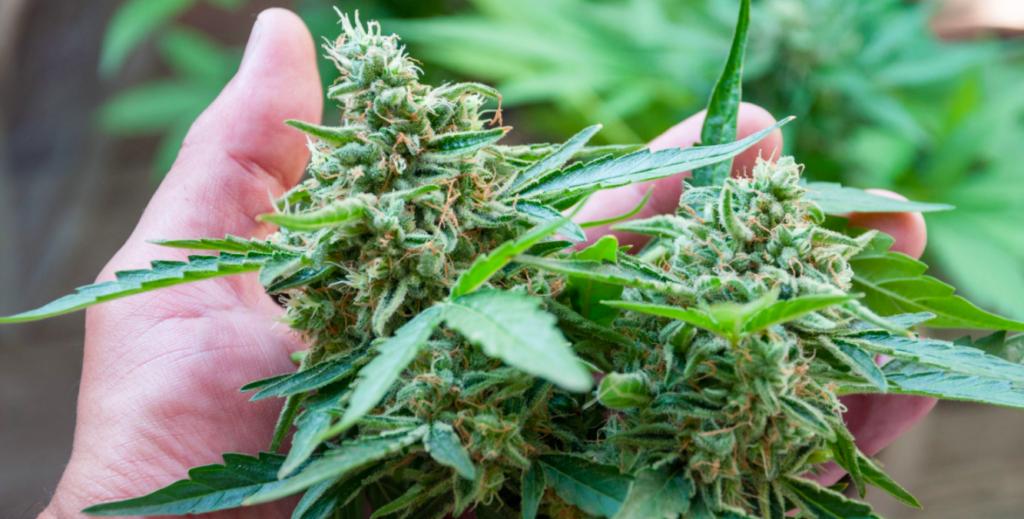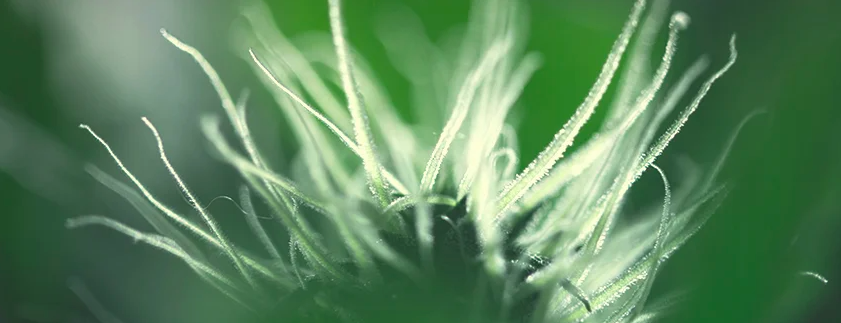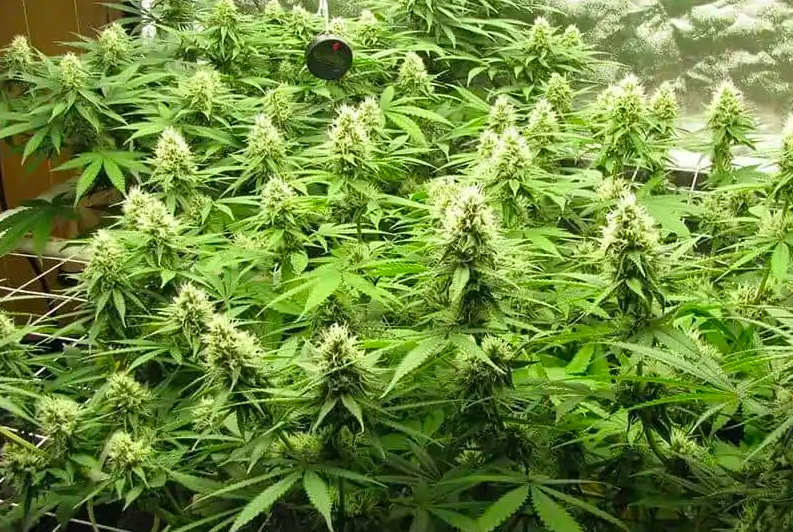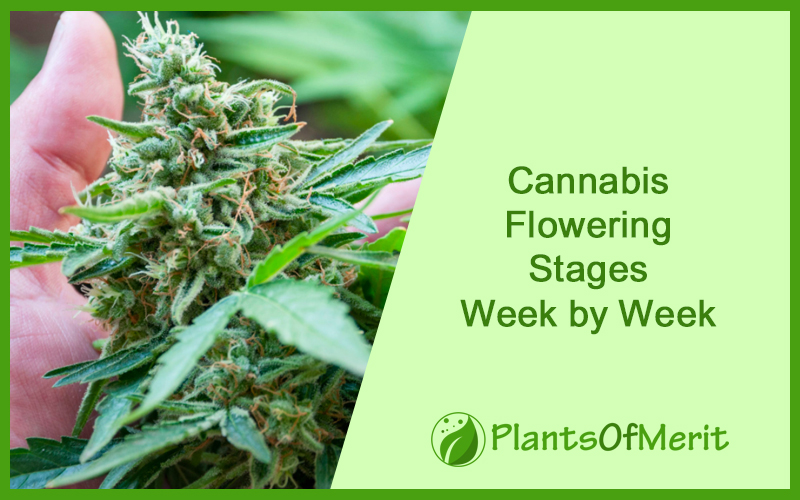A typical cannabis plant can take anywhere between 5 to 8 months to grow. These plants generally grow in two distinct phases – the vegetative phase of growth, and the flowering phase of growth. There is an intermediary pre-flowering phase in between but that isn’t something that goes on for long so it can be ignored for the purpose of this article. Growers need to understand that flowering is a process that can take about two months to fully happen.
However, before we get into the actual flowering process, it is crucial to know the entire life cycle of a plant: the cannabis plant starts off as a seed, then enters the germination phase from where it becomes a seedling. After providing long hours of light to the seedling, it enters a phase of rapid growth where you will witness the plant grow in size, the stem begins to become thicker, and the foliage begins to increase too. This is the vegetative phase of growth.
Once the vegetative phase of growth is over, the plant will begin to enter the pre-flowering phase where the buds will begin to emerge and become prominent. This is a short-lived phase after which a plant enters the ‘flowering’ stage of growth. Here, the flowers begin to emerge and this is something that goes on for about two months. This is the phase that we will be addressing in detail in this article.
Cannabis Flowering Stages Week by Week

For the purpose of this article, we have broken down the flowering phase into three distinct phases – the early-flowering stage (Weeks 1, 2 and 3), the peak flowering stage (weeks 4 and 5), and the pre-harvest phase (Weeks 6, 7 and 8).
The early flowering stage is where you will begin to notice that the buds are showing up and you will be able to tell the males from the females. During the two weeks of peak flowering, the buds will begin to get bigger and fatter and the pistils will change colors. In the final three weeks, you need to begin the harvest prep as your plants will be ready for harvest by the end of this process.
While some cannabis plants can take more than 8 or less than 7 weeks in the flowering phase, we will go with the average number here, which is eight weeks. Here’s what your plant goes through over the eight weeks of flowering:
Week 1
This is a phase where your plant is going through a lot of changes. You will notice that there is a sudden increase in the height as well as the width of your plant. In fact, it isn’t uncommon to see some strains of cannabis plant actually become double their size during the first few weeks of flowering.
Another thing that you might notice at this phase is that your plants are becoming much greener, particularly at the top. This is a time when new colas are coming up and rapid growth is happening on the upper portions of the plant. The plant is also going to become much sturdier here as the stem begins to harden quite a bit at this point.
This is also the time that you begin to start using some training techniques such as Low-Stress Training (LST) by bending the upper portions a little to get a larger canopy that allows the grow lights to function better.
Week 2
When you begin to notice that the plant has begun to grow rapidly, one thing that you need to take care of is that it will also require more nutrition. During the first week, we recommend you do not change your nutrient schedule right away, but actually wait till the second week for that. This is because you don’t want to shock your plant by changing its diet just when it has begun to grow.
One of the key things that generally happens during the second week is that white pistils begin to appear. These are white hair-like structures that form at the junctures where fan leaves begin to come out of the stem. It is these pistils that eventually grow into buds. This is also an indicator of which plants are female plants – only the females will get these pistils and the male plants need to be removed from the growing area else they may pollinate the female plants and will cause them to grow seeds.
By the end of the second week you can clearly tell the male and female plants apart and make sure you’re growing only female plants by the time the third week begins to set in. While weeks aren’t really a hard marker here, we suggest you make a judgment call here and do it as soon as you begin to see the difference in the genders.
Week 3
This is the week where the rapid growth that we’ve seen in the first two weeks begins to slow down and by the end of the third week, your plants are most likely to be fully grown. Sometime towards the end of the third week of the flowering stage, you will also begin to notice that the pistils, which used to be fine strands of white hair, are now beginning to look more like buds.

Something that you need to keep in mind about this phase of the growth cycle is that this is a time when your plants will spend a lot of energy and need a lot of nutrients. This is the peak consumption so make sure that you are providing nutrients in an appropriate amount. However, also keep an eye out for nutrient burns, which often occur at this phase because the overall intake of nutrients has shot up.
Week 4
As we progress into week 4, the biggest difference from week 3 is that the buds will start to get a little bigger. The pistils will still be sticking out of the buds, but the buds will continue to get fatter. However, at this phase, you should really not expect your plants to grow any taller or wider. All the focus is now on the buds and the flowers – as the plant is no longer spending energy on growing bigger, but on generating buds and flowers.
Somewhere in the fourth week, you will also notice that the smell is getting much stronger. This is because this is a phase where trichome production has shot up and the buds are producing more trichomes. This will lead to a very strong and pungent smell which you will need to contain with the help of fans and filters else it might raise a suspicion in people living nearby.
Week 5
The fifth week is when you are almost hitting peak flowering. This is a time which growers usually love, as the fruits of their labour over the past several months are finally becoming visible. Not only can you see them, but you can smell them too – as the trichome production has hit peak levels by this time, and the odor is really strong and overpowering. You will need to make sure that your ventilation system is very good and that you are using a lot of carbon filters and other similar agents to make sure that all the smell is dealt with.
Your plant will begin to get heavier at this time as the buds are getting fatter. You will notice that some branches have begun to droop due to the weight. Even till the fifth week you might see some new buds emerging out of the colas.
A significant change that becomes prominent around this time is that the pistils that come out of the buds will slowly begin to change color. What was white for so long will gradually start turning into a brown or amber-colored strand of hair. The trichomes too will no longer be translucent but will start turning a little opaque and white around this time. All of these are a good sign – an indicator that harvest is just a few weeks away.
Week 6
This is the week where you will notice that your buds have begun to ripen. By this time there is absolutely no growth in the leaves and foliage, and your plants are as green as they are going to be. All the energy is now going into the development of the buds and flowers. Something to keep in mind here is that since all vegetative growth has now stopped, do not provide any nutrients to your plants which are meant to boost vegetative growth. A majority of your nutrients should now be flower boosters.

This means that you need to reduce the Nitrogen input rather significantly. An excess of nitrogen at this point would not only begin to cause nutrient burns in the plants, but it might also lead to the plant returning back to the vegetative phase and stop the flowering process. The sixth week is a caretaker period where you need to make sure that you are providing your plants the right kind of nutrients.
Week 7
Late into the sixth week or early into the seventh, you are going to witness another change in your plants – the leaves on the lower portions of the plants will begin to turn yellow and fall. However, you shouldn’t worry too much about this as it is a very normal process around this time in the plant’s life cycle. In fact, this begins to happen to some strains as early as late-fifth or early-sixth week too.
Another interesting thing begins to happen in the seventh week – you will notice that smaller buds begin to form alongside your existing buds. This doesn’t necessarily happen with all strains, but certain strains do have this happening. This generally happens when the plants are stressed out due to excess light or heat.
Around this time, also make sure that your plants aren’t so tall that they are very near to the grow lights. If you feel that the lights are a little too close, move them higher so that there is no light burn that is caused. Lastly, also make sure there is sufficient air flow in your grow room or your grow tent so that all the heat is countered. However, with air flow, you must also take care that the plants are very pungent at this phase and they will smell .. a lot!
Week 8
As we enter what is generally the final week of flowering, this is the time you should begin the process of flushing your plant. In fact, you can actually start it from the middle of the seventh week. However while ten days is an ideal time, you should at least flush it for seven days. Flushing, for those who may not be aware, is the process where you wash off all excess nutrients from your plants.
The way to flush your plants is to stop giving them nutrient solution and provide them only with regular water. This will make sure that the plants consume all the excess nutrients that they have stored in their body. This makes sure that the taste is good, but also ensures that there’s no nutrient deposit left in the plant’s body. Further, this gives your plants a very natural and plain taste. Nutrient deposits actually make it pretty harsh to smoke.
Lastly, you need to keep checking your plants this week for how their trichomes look. Use a magnifying glass or a jeweller’s tool to observe how your trichomes are looking. If they are milky white or amber, this means your plants are good to go for the harvest. If they are still transparent, you might want to wait for another 3-4 days before you head into the final harvesting process.
Things to Take Care of During The Flowering Stage
During the flowering stage, you need to take care of the following things:
- First off, make sure that the humidity levels are somewhere around 45%. Too much humidity can be counterproductive for the health of your cannabis plant.
- Make sure that you are trimming away all the yellowed leaves from the bottom portions of the plants.
- Make sure you are not providing any Nitrogen-based (or pro-vegetation) nutrients from mid-flowering
- Ensure that your plants are safe from light burn and heat burn by keeping the lights far and the temperatures a little cool
- Lastly, flushing is very important for the end result. So many months of effort will go down the drain if the bud is too harsh to smoke. Flushing your plants ensures that the bud tastes natural and pure.
Basic Growing Requirements For Cannabis Plants
Cannabis plants have certain requirements that need to be met if you want your plants to grow healthy.
- Lighting
Lighting is very important for cannabis plants, especially in the flowering stage. These plants maintain a photoperiod of 12 hours of light and 12 hours of darkness. Make sure not to disturb the plants during the dark period as it may cause light contamination.
- Humidity
Maintaining the right level of humidity is essential for the proper growth of cannabis plants. The ideal humidity range is between 40-50%. Anything below or above this range can be fatal to your plants. High levels of humidity may lead to problems such as fungi and mold.
- Temperature
The temperature requirement for cannabis plants changes with every stage. For your plants to thrive in the flowering stage, the temperature should be maintained between 18 and 26 degree Celsius. If the temperature falls below this range, it can affect your plants negatively. While temperatures above 28 degrees Celsius may lead to stunted growth, the plants may die if the temperature level falls below 18 degrees Celsius.
- Watering
You must provide clean and chlorine-free water to your cannabis plants. Regular watering is essential for better results, but at the same time you shouldn’t end up overwatering your plants. Also, make sure that you have a proper water drainage system ready for your plants.
- pH Levels
The pH level of the soil should be between 6 and 7. If the pH level goes beyond this range, it may create problems for your plants such as nutrient toxicities and deficiencies. Most nutrients are available in the growing medium between the mentioned pH levels.
- Ventilation
Proper ventilation and airflow are also crucial for your cannabis plants. Your plants need to breathe and save themselves from the growth of fungi, mold and rot with good ventilation.
FAQs
1. How long does it take for a cannabis plant to grow?
It can take anywhere between 5 to 8 months for cannabis to grow. These plants have two distinct growth phases: the vegetative phase and the flowering phase. There is also an intermediary pre-flowering phase in between. But compared to the other two phases, it doesn’t last for a long time.
2. During which phase do cannabis plants go through the most changes?
The first week is considered to be the most crucial phase. This is the phase when cannabis plants go through a lot of changes. For example, the plants will grow in height, the width of the plant will increase, and more. You will also notice the plants becoming much greener than before.
3. In which phase do pistils appear on cannabis plants?
You will notice your cannabis plants growing pistils during the second week. Pistils are hair-like structures that are located at junctures. When the time comes, these pistils grow into buds. This will let you know the gender of the plants. Female plants are fine, but male plants should be removed.
4. When should I flush my cannabis plants?
Flushing is the process of washing off excess nutrients from your plants. The ideal time to flush your plants starts from the middle of the seventh week. You should flush your plants for at least seven to ten days. Flushing is done by providing regular water, instead of a nutrient solution. This will help the plants absorb the excess nutrients that they have stored in their body.
5. What is the ideal humidity level for cannabis plants?
Cannabis plants need different humidity levels at different phases of their growth. But anything over 60% could potentially damage your plants. Also, you should set the humidity level below 40% one to two weeks before harvesting plants.
6. What are the important things to consider when growing cannabis plants?
There are a few important considerations that play a major role in the growth of your cannabis plants. These include humidity, lighting, temperature, and watering. Other factors that need to be considered are ventilation, soil quality, and pH levels.
7. How much water do cannabis plants need?
Based on research, outdoor cannabis cultivation consumes around 6 gallons of water per day during the growing season. However, indoor cannabis plants require only 2.5-2.8 gallons of water per day towards the end of the growing season. Also, make sure that the cultivation bed has a proper drainage system for the excess water to escape.
8. What is the ideal pH level for cannabis plants?
The ideal pH level of soil for cannabis cultivation is between 6 and 7. If the pH level exceeds the limit, it might lead to nutritional deficiencies and toxicities. This is why it is important to maintain the pH level of the soil.
9. What is the best soil to grow cannabis?
Out of all the soil types, loam is probably the best for growing cannabis. For those who don’t know loam is a mixture of sand, clay, and silt. It brings forth the best qualities that are needed for good cultivation.

